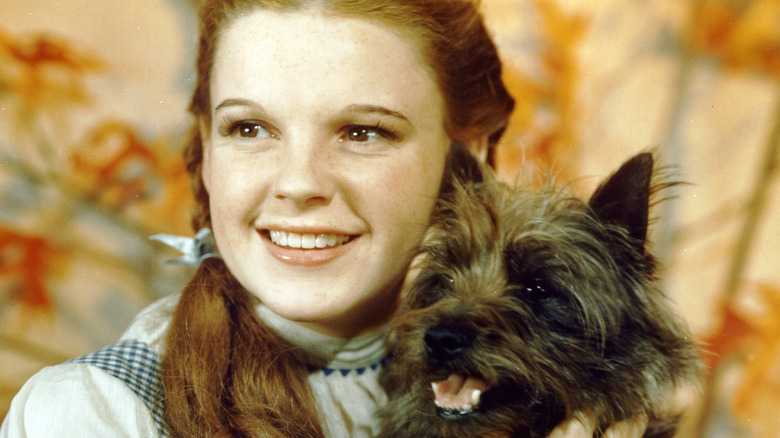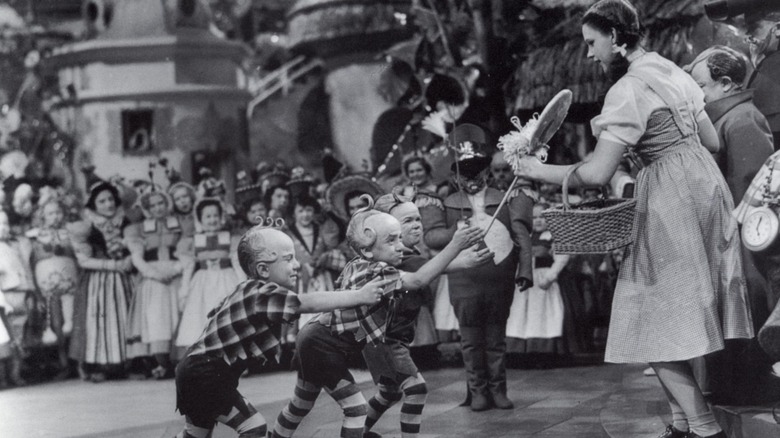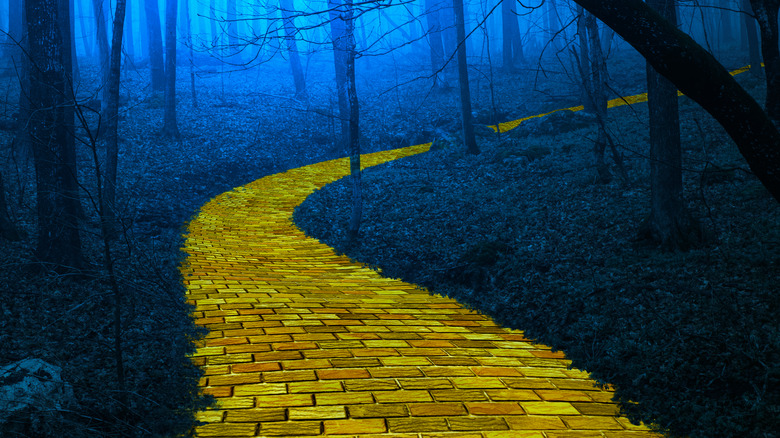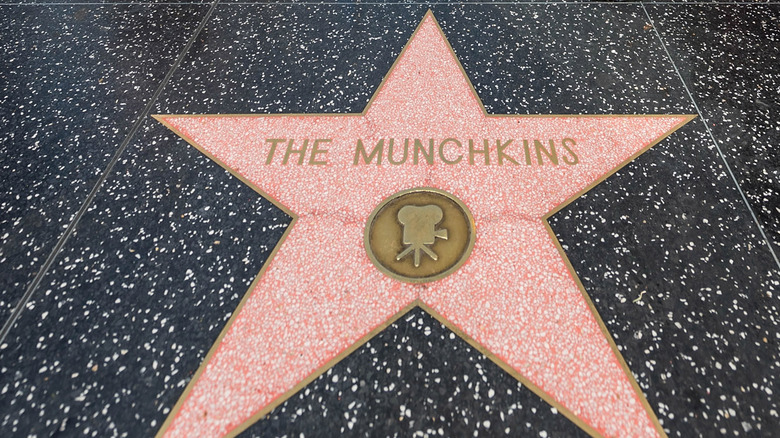The Wizard Of Oz Actors Who Got Paid Less Than The Dog
"The Wizard of Oz" is a classic Hollywood film based on the book of the same name and tells the story of Dorothy and her dog Toto trying to get back to Kansas. After getting caught in a tornado, Dorothy ends up in a magical place called Oz, where she meets different characters in her attempt to get back home. Some of these iconic characters are the Scarecrow, the Tin Man, and the Cowardly Lion. Just as she wished to be back home, the three individuals she met wished for a brain, heart, and courage, respectively (via Britannica). The trio accompanies Dorothy on her long journey to meet a wizard who can potentially give them what they're asking for, but they encounter obstacles set by the Wicked Witch of the West en route on the yellow brick road. The 1939 film would become one of the most popular book-to-film adaptations in Hollywood (per Entertainment Weekly).
Dorothy was played by actress Judy Garland, and the role would be one of the most defining roles of her career. She was paid $500 a week for playing the part over the course of 22 weeks, reports the Los Angeles Times. Dorothy's dog Toto is with her throughout the entirety of the film, and the cairn terrier who played the part was paid (his owner, really) $125 a week. Not bad for a nonhuman who didn't say a word in the film.
Interestingly, the furry pooch was paid a lot more than some actual actors who were also in the film.
Toto got paid more than these memorable characters
Per the Los Angeles Times, there were about 600 actors in "The Wizard of Oz." A good segment of them were the Munchkins — a group of people in Munchkinland, located in some part of Oz. Just as they were in the film, in real life the actors who played them were people with dwarfism. And they were paid less than Toto, only earning $50 a week, per National Post. Despite singing and talking in the film, the little people who played the Munchkins received a major difference in pay compared to the dog. About 124 signed on to be in the film, per The New Yorker.
Guess it can be chalked up to the sign of that time. While Garland was the main star of the film and is in every scene, she still made less than the three men who played Scarecrow, Tin Man, and Cowardly Lion. Hollywood has changed quite a lot since the 1930s, and though there is still work to do when it comes to equal pay and representation, little people are marginalized in the industry and still have to advocate against the types of roles available to them and getting adequately paid for it, per The Hollywood Reporter.
The tough road little people faced
Back then, little people were extremely limited in the television roles offered to them. They were (and still are) often cast in mystical and magical roles (via TV Tropes). Often, the films that hire little people are typically in the fantasy or horror genre. So along with poor roles to choose from, the pay is poor, too.
A year before the famous film came out, the first feature-length animated film was released, and it featured animations of little people. "Snow White and the Seven Dwarfs" was the first of its kind, and it turned out to be a success for Disney. But it helped push stereotypes about little people. These misconceptions are likely what encouraged and proved how detrimental assumptions about little people can be. One of the most popular rumors about the filming of "The Wizard of Oz" was the behavior of the little people on set. There was one even fueled by Garland, who once stated that the Munchkins actors engaged in constant drinking until they blacked out, per The New Yorker. All that was really confirmed was that a few actors were let go for violence.
Munchkins actors after The Wizard of Oz
In 1996, author and journalist Stephen Cox released a book titled "The Munchkins of Oz." The book was meant to highlight the lives of the actors who played the famous characters. Along with terrible pay, most Munchkins weren't even individually credited in the film. Cox also explored the lives of some of the actors who continued to work in Hollywood and the ones that left. Some of the actors were only in the industry because they needed the money, according to The New Yorker. Despite the extremely low pay offered, it highlighted the general limited work opportunities for little people and what some were willing to do to earn some kind of money.
While Toto got more pay, it was the Munchkins that earned a star on the Hollywood Walk of Fame, per Los Angeles Times. The single star recognized all the little people that made history in the film.



